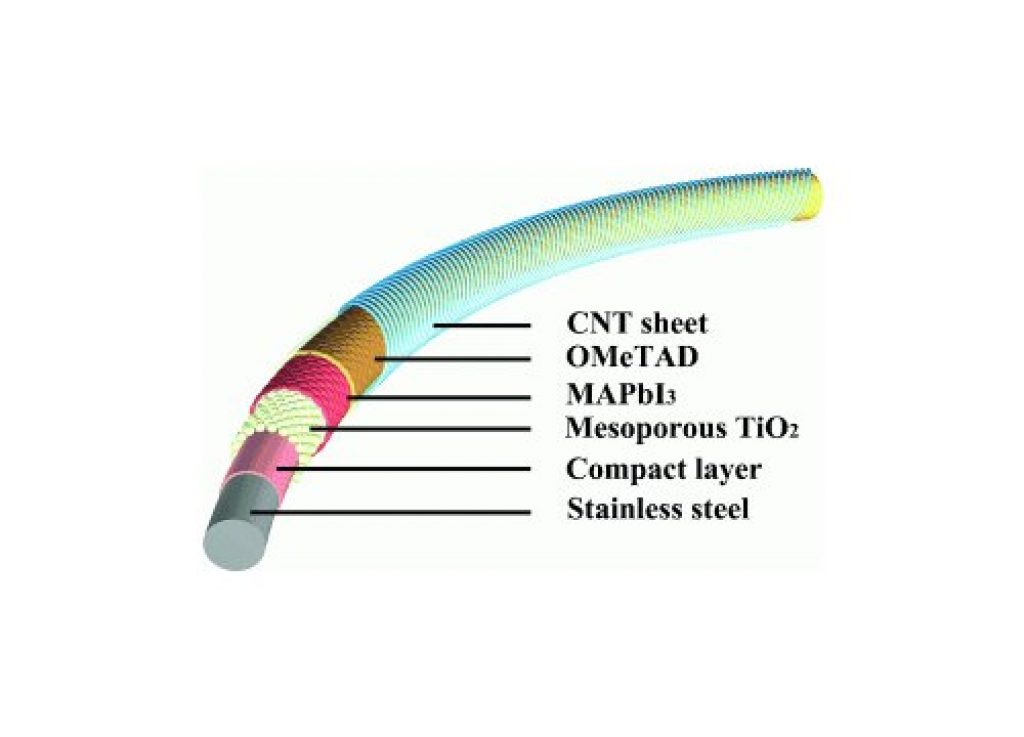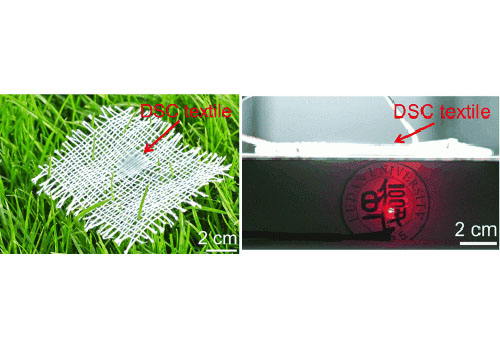
AsianScientist (Aug. 7, 2014) – Scientists have developed solar cells in the form of fibers that can be woven into textiles, paving the way for powering small electronic devices incorporated into clothing. This research has been published in the journal Angewandte Chemie.
Although promising as a source of renewable energy, solar cells are face a trade-off between cost and efficiency: they are either inexpensive and inefficient, or they have a reasonable efficiency and are very expensive.
One solution may come from solar cells made of perovskite materials, which are less expensive than silicon and do not require any expensive additives. Perovskites are materials with a special crystal structure that is like that of perovskite, a calcium titanate. These structures are often semiconductors and absorb light relatively efficiently. Most importantly, they can move electrons excited by light for long distances within the crystal lattice before they return to their energetic ground state and take up a solid position, a property that is very important in solar cells.
A team led by Professor Peng Hisheng at Fudan University in Shanghai has now developed perovskite solar cells in the form of flexible fibers that can be woven into electronic textiles. Their production process is relatively simple and inexpensive because it uses a solution-based process to build up the layers.
The anode is a fine stainless steel wire coated with a compact n-semiconducting titanium dioxide layer. A layer of porous nanocrystalline titanium dioxide is deposited on top of this. This provides a large surface area for the subsequent deposition of the perovskite material CH3NH3PbI3. This is followed by a layer made of a special organic material. Finally a transparent layer of aligned carbon nanotubes is continuously wound over the whole thing to act as the cathode. The resulting fiber is so fine and flexible that it can be woven into textiles.
The perovskite layer absorbs light, that excites electrons and sets them free, causing a charge separation between the electrons and the formally positively charged “holes”. The electrons enter the conducting band of the compact titanium dioxide layer and move to the anode. The “holes” are then captured by the organic layer.
The large surface area and the high electrical conductivity of the carbon nanotube cathode aid in the rapid conduction of the charges with high photoelectric currents. The fiber solar cell can attain an energy conversion efficiency of 3.3 percent, exceeding that of all previous coaxial fiber solar cells made with either dyes or polymers.
The article can be found at: Qiu et al. (2014) Integrating Perovskite Solar Cells into a Flexible Fiber.
——
Source: Angewandte Chemie.
Disclaimer: This article does not necessarily reflect the views of AsianScientist or its staff.












